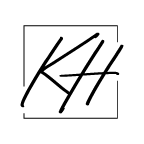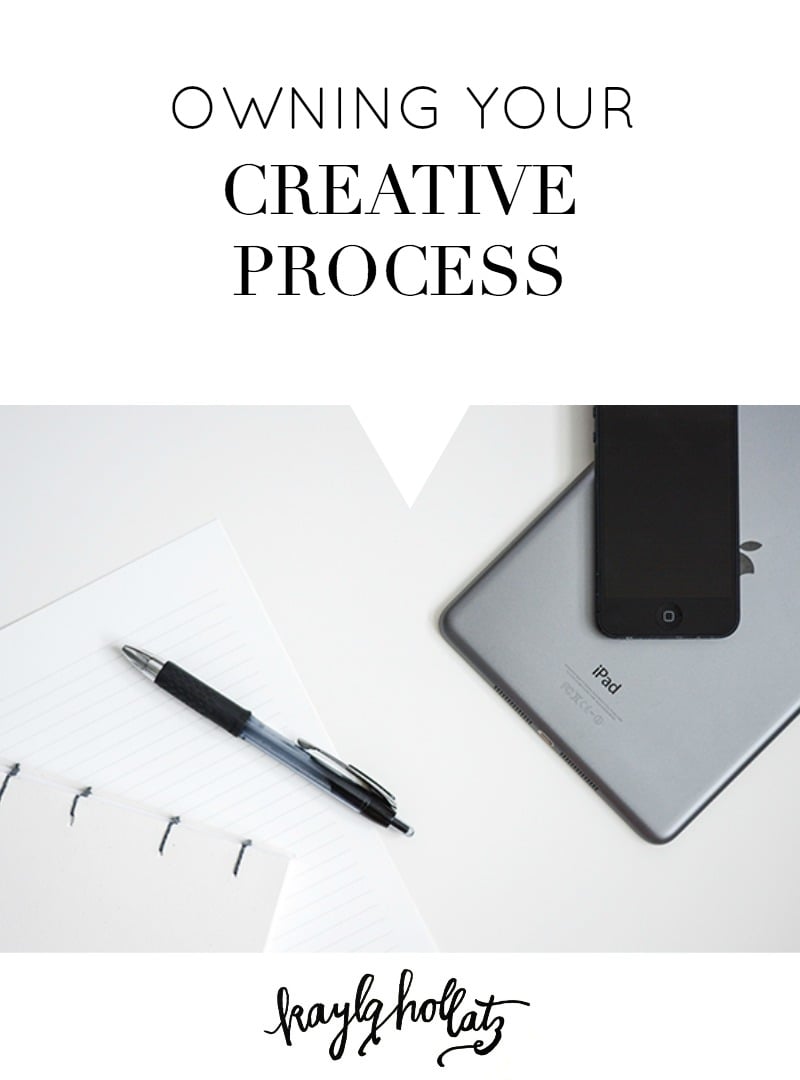Owning Your Creative Process
January 11, 2016
For many years, I fought my creative process.
I thought the most successful people were those who were extremely organized and worked within very structured guidelines. You know, the ones who have a template, script, and outline for every action they take online.
I admire these Type A-ers for their ability to create an organization system that fits the way they think. I have many Type A qualities myself, which left me confused as to why their process never worked for me.
Any time I tried to mimic their process, I could feel myself strangling my ideas. They didn’t have room to breathe, to move, to evolve into something greater because I was so focused on trying to fit everyone else’s mold of what your process “should” look and feel like.
Then I did what any creative would do: started from scratch and built my own process. When I started to tune in and embrace my process quirks, the “ah-ha” moments started to pour in.
Owning my creative process was one of my biggest “wins” of 2015.
Here’s an in-depth look into my creative process. I hope by sharing mine, it inspires you to step back and reevaluate your own.
I embraced my “scattered” process.
From a young age, whenever I was asked to fill out a form, I could never fill it out in order. I routinely skipped around, filling in different boxes from top to bottom to back to the top again. The thought of filling out a form like this may give you anxiety but others may be reading this and nodding along.
I fought this for so long because “scattered” has become somewhat of a dirty word to describe someone who doesn’t have a clue what they’re doing but I’d have to disagree. Content like The Power of We audio series would not exist if I wouldn’t have embraced my scatteredness.
Scattered or organized, I’m confident most of us like to create from some sort of outline. I’m a die-hard loose outline fan. What I mean by this is I like to jot down a few thoughts before I begin writing but I never work exactly from the outline. I crave wiggle room where others crave structure.
A word of advice: if the process is more irritating than enlightening, ditch it and find a new one. Follow your gut on this.
Questions to ask yourself: When I’m storytelling, do I move in a linear way or do I like to skip around? Do I work well on the fly or do I need a clear direction? Do I like to follow my outline to the T or would I rather go-with-the-flow? Do I prefer bullet points or detailed paragraphs?
I’ve designed my environment around my creative process.
I’ve quickly learned that I need natural light to brainstorm and vision journal, but if I need to crank out a blog post, client document, or tackle my inbox, dimly lit spaces are my cup of tea.
I always need to keep multiple stacks of sticky notes on my desk for those spur-of-the-moment ideas. Even when I was younger, I asked for post-it notes as stocking stuffers. They are essential to my brainstorming process.
I also have a very hard time writing when I’m surrounded by noises or loud music. If the music has vocals, forget about it. No writing will get done. Therefore, I know I need a quiet space in order to create and if I listen to any kind of music, it needs to be instrumental or jazz music. On the flip side, I know many of my branding and web designer friends like to listen to podcasts while they design. Do whatever works for you!
Questions to ask yourself: How do I want to feel when I’m in my creative space? What makes me feel most zen? When I picture my creative space, what colors do I see?
I know when I’m most productive.
Like I noted above, I do my most productive work at night. I think this was a learned habit after years of school and work allowing me to only have the nights to work on my passion projects. All I know is I’ll never be the person to wake up at 5 AM to start the day if I don’t have to but good for you if you can.
I also don’t mind working on the weekends. When you’re a side hustler, you’re almost required to make the most of your weekends since they’re your biggest open windows of time for work. Alternately, you may be someone who needs to recharge sufficiently on the weekends. Follow the routine that works best for you.
Question to ask yourself: What time do I feel most energized? Am I a night owl or an early bird? What days of the week do I feel most productive?
I write cues to myself when creating.
Whenever I write, I give my future self-cues. This is because I normally write in Google Docs so I’m not distracted by design and formatting. These cues can be anything from [LINK] when I need an external link to <h1> or <h2> when I need a header.
Whether you write the cues in the text of your post, track your changes within your Word document, or use the Notes function in Google Docs, your future self will thank you. It will especially come in handy when you collaborate with someone else.
Questions to ask yourself: How do I review my documents? Do cues help or confuse or distract me? Do I need to write cues for a collaborator? What cue style and format makes the most sense for how I edit?
Your process will look different from mine, and that’s more than okay.
Give yourself permission to follow your inner dialogue when creating. We all brainstorm in different ways so do what works for YOU, not someone else.
When I used to write a blog post following everyone else’s process, it took me 7-8 hours to complete each post. After embracing my process, I can now create a loose outline, write the blog post, gather the internal and external links, edit two times through, create my blog post image, and format it all in Squarespace in about 2-3 hours max. Talk about harnessing your power!



